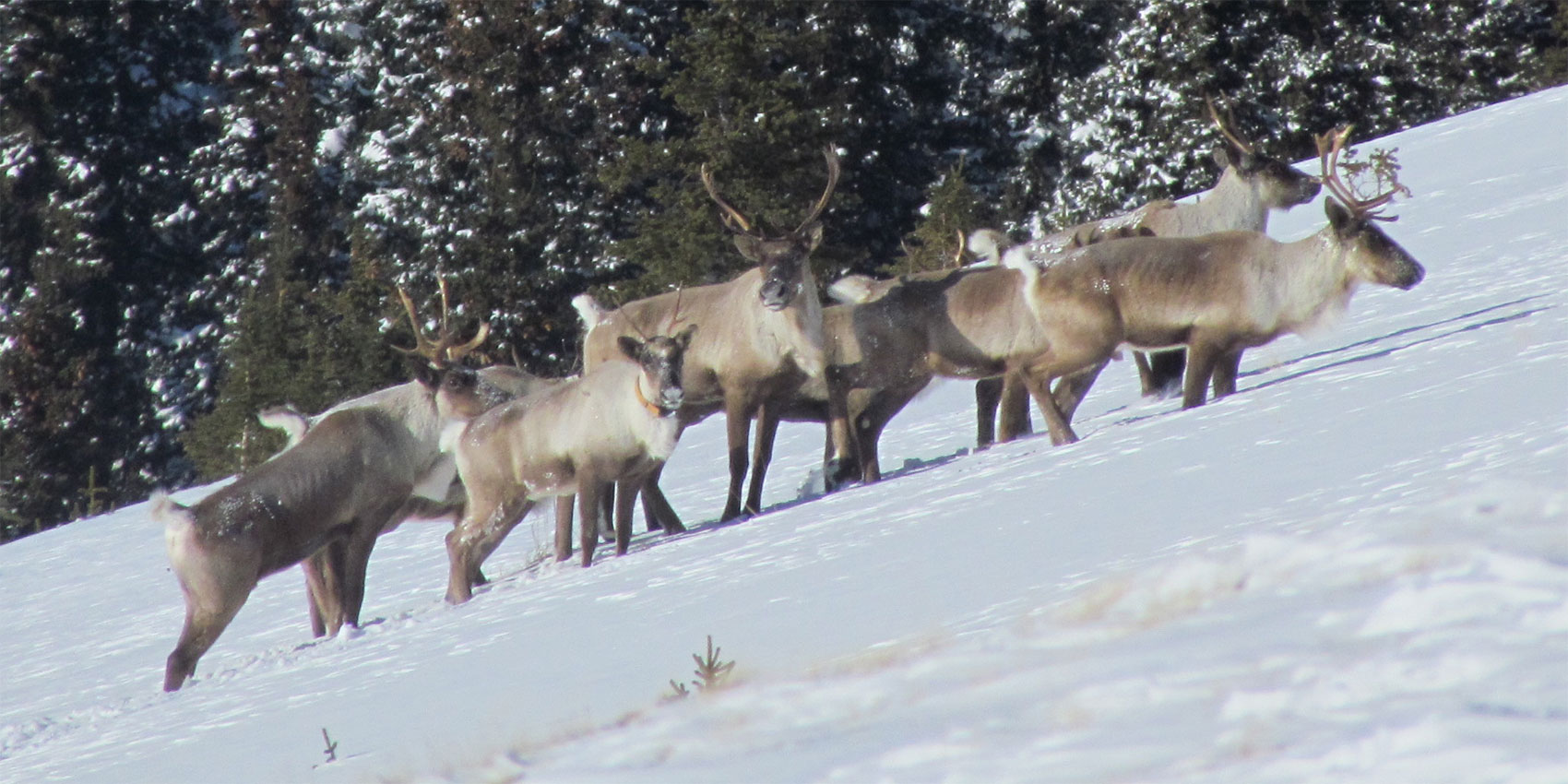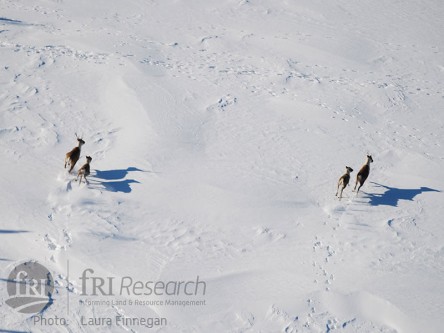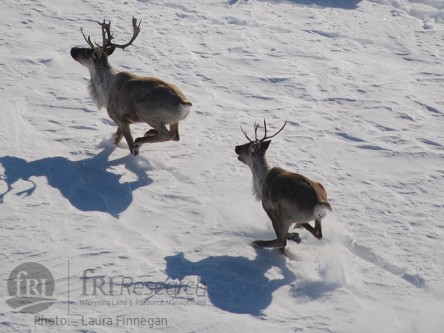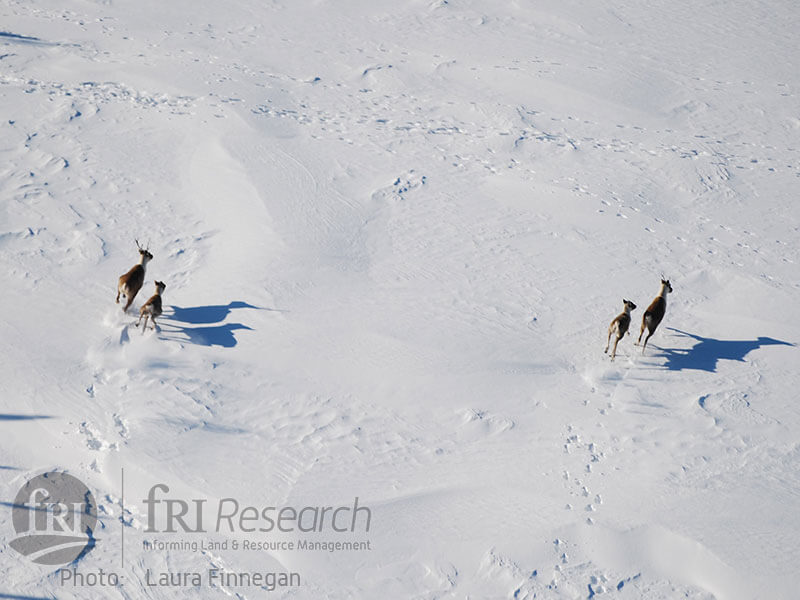
Ben Williamson
In the foothills of west-central Alberta, the last of the snow does not melt until May. It is then that the dwindling herds of caribou begin their spring migration up into the Rocky Mountains. They leave behind a landscape rich in nutritious lichen and other delicacies but also—they hope—their predators.
The timing is no accident. After a long, harsh winter in the Canadian boreal forest, the herd embarks on the climb up to their mountain refuge. Safer from wolves and far from human activity, the females give birth.
June is a delicate time. These calves must survive for the herd to have a chance at recovering. The mothers choose gentle slopes on mountain ridges that are not too difficult for the calves to navigate. But there are trade-offs to consider. They may be safer from wolves, for example, but they are also more vulnerable to wolverines and bears. Only about six in ten survive their first month.
Gradually, the calves grow stronger over the summer, until their mothers can resume their normal movement rates for foraging. The herds stay generally near the top of the treeline, nibbling on lichen and herbs. The caribou wander the alpine forests until the season changes and it is time to venture back down into the boreal.
Much of this was explained in a new paper by Barry Nobert and a team of fRI Research biologists. Remarkably, they were able to uncover this story by staring at a spreadsheet of thousands of caribou locations. How a caribou moves around the landscape gives a very accurate picture of what it’s doing.

The team borrowed a method developed by Craig DeMars and his colleagues from the University of Alberta, and applied it to the Narraway and Redrock-Prairie Creek herds for the first time. The idea is that if an adult female abruptly stops moving and then slowly resumes her normal pace between May and July, it is almost certainly because she gave birth and kept close to her calf as it found its legs. The other insight DeMars had was that if the mother’s movement rate jumps back up to normal seemingly overnight, then it is likely that the calf died.
To make sure that these patterns are correct, DeMars tested them on four herds in northeastern BC. When female caribou were captured to be fit with GPS collars, he tested them for hormones to find out which were pregnant. That spring and summer, he flew over the herds in a helicopter to verify which caribou gave birth, and which calves survived. DeMars then compared the movement rates from the GPS collars with the calves he observed, and found that his patterns in movement rate were over 97% accurate at detecting calving and 87% accurate about calf survival.
For our Alberta herds, Barry and the team used location data from 1998–2014 and we owe our partners in the Government of Alberta and the forestry company Weyerhaeuser thanks for doing the hard work of collaring those caribou. During that time, 81 adult female caribou were fitted with GPS collars that relay the individual’s location to researchers. Based on their movement rate patterns, 80% the Narraway females gave birth each year, on average, with 60% of the calves surviving one month. 61% of females from the Redrock-Prairie Creek herd, on average, give birth each year, with 58% calf survival.

This study shows that a tremendous amount can be learned from long-term GPS collar datasets. In this paper alone, the timing and location of calving was nailed down, the reproductive rate of the herds was calculated, as well as the calf survival rate. We saw what habitat mothers select to give birth in and raise their young. We observed how caribou avoid human disturbance and we learned that mothers do not return to the same place each summer.
As useful as all this is, more must still be done to conserve this species in Alberta. The Caribou Program has a suite of other projects that are informing the Caribou Recovery Plan.
The paper, “Seeking Sanctuary – the neonatal calving period among central mountain caribou (Rangifer tarandus caribou)”, was published in the Canadian Journal of Zoology.







